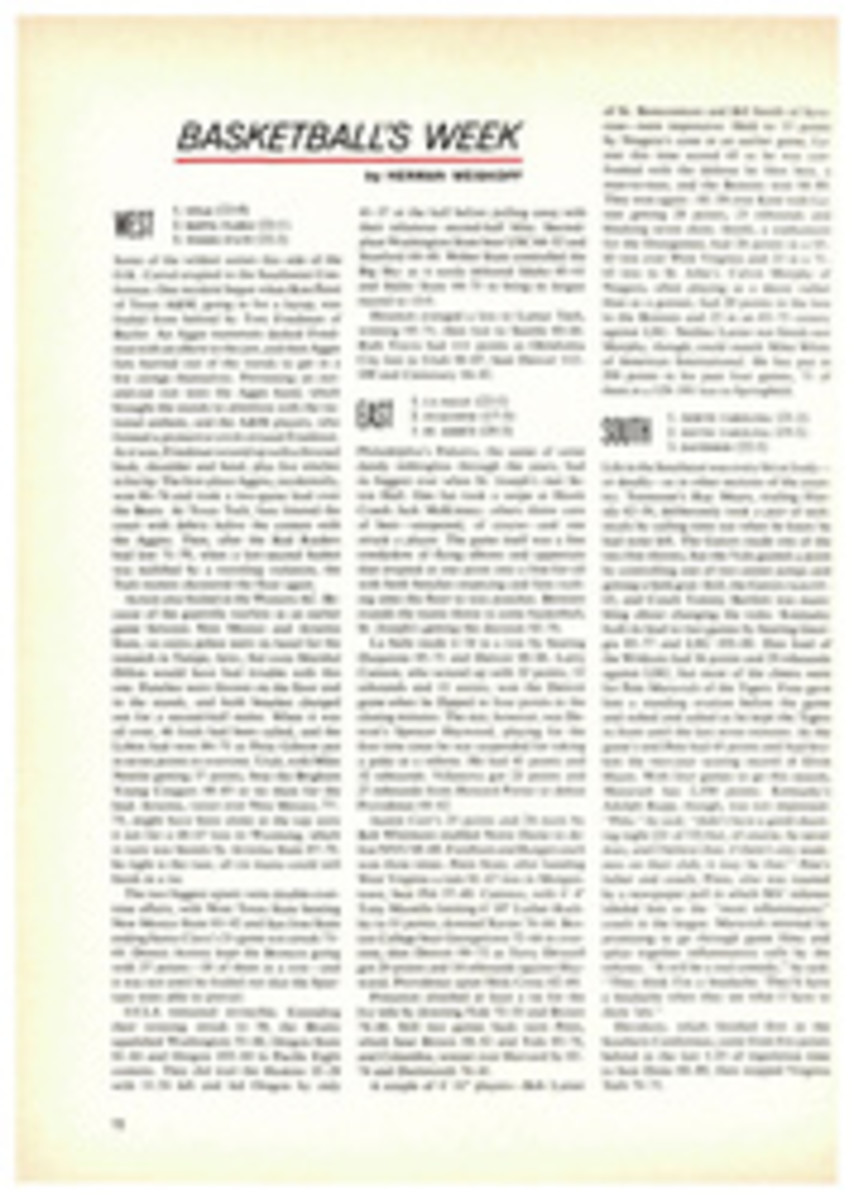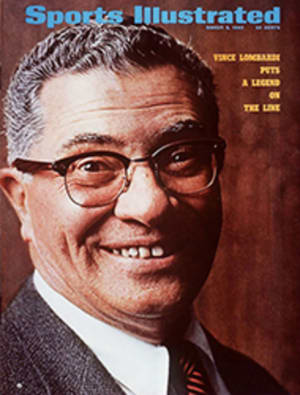
FRENZIED RIDE ON PLACID ICE
To those few who handle it well there is no sensation in the world like taking a bobsled around a high iced wall at 90 mph. Well, maybe there is one other: finding out who does it best. For the past two weeks the sledders have been doing exactly that, and now at last—battered, worried, defeated or successful—they know.
Everyone who is anyone in sledding assembled at Lake Placid in upstate New York for the 1969 World Bobsled Championships. The Lake Placid run is the only one in all of North America, an ice monument left over from the 1932 Olympics, and last weekend it also proved to be the fastest in the world.
For four years now bobsledders have been trying to pull off a full-bore world championship, one where everybody gets in all four of the required runs, and for four years now things have been going wrong. Usually the villain has been the sun, with bobsled courses disintegrating overnight. Warm weather shortened the 1966 championship in Cortina, and the same thing happened in 1967 and 1968 at Alpe d'Huez in France. In fact, the last time the sledders managed to put together a complete contest was at St. Moritz in 1965.
But this year cold weather came to the high Adirondacks and 13 nations came ready to ride. There were the Italians, fresh from winning the European four-man title, coached by last year's dual Olympic champion, Eugenio Monti. ("It is terrible, this coaching," said Monti. "I want to get on the sled and do it myself.") There were the two-man European titlists, Erwin Thaler and Reinhold Durnthaler of Austria; a band of tough Rumanians; a few Czechs; some Swiss; bearded Germans in shiny black suits; a tidy crew of Britons with silk scarves knotted carelessly at their necks; some gritty Frenchmen; and maybe the meanest American crew anyone had ever seen. They shook hands all around and went to the top of the hill.
"Now then," said Monti, who looks especially purposeful because most of his face is a road map of old bobsled-ding scars. "Now then. It is easy to ride the sled down. Anyone can do that. It is not so easy to ride it down and win."
The old fox was so right. The Japanese looked at the run and asked if maybe they could start training from the halfway point to get the feel of it. "Hell, no," one official growled. "You take it from the top like everyone else." And the Japanese did: on their sled runners, on their heads, elbows and, occasionally, their noses, in what had to be one of the greatest displays of educational courage ever shown. In the official two-man competition that followed, they went so high into one curve that the brakeman hit his head on the guardrail and knocked himself unconscious. They finished by slamming through a fence and shattering their sled, picking up along the way an amazing collection of broken bones and bruises. They still came up smiling a few days later, pleased with their progress.
The Lake Placid run proved to be unusually deceptive. It wriggles down Mount Van Hoevenberg for the regulation 1,600 meters. It has just three major curves, and for each big curve there is a little one, as required. The total drop is 165 meters and the average grade is 10.2 degrees—and anyone can run that, right? Not on your hand brake, they can't. For one thing, the Lake Placid people have improved the run every year, and this time they had installed a new 50-foot push-off area where the sledders could really sprint to get their sleds started. And that did it. The old course record down the chute was 1:08.84 for the two-man sleds and 1:06.92 for the fours. In practice the two-man sleds broke that mark six times and then 29 times again in the official runs. And the four-man teams were tougher than that: they broke the record 74 times in training and in the first day of actual competition they did it 28 times out of 34 starts. The oldtime bobsled veterans gave up trying to handicap the meet and lined the rails to watch. "This thing," said one of them, "could be anybody's championship."
Exactly. The combined time of four runs over two days makes a winner. And there, after the first day of two-man competition, sat the U.S. in the lead. And there, after the second day of competition, sat the U.S. suddenly in fourth place. Italians Nevio de Sordo and Adriano Frassinelli had beaten them, piling up a fast second-heat run of 1:06.62 and a 4:31.73 combined. The Rumanians swept to a silver medal; Italy's other team took the bronze.
Italian Brakeman Mario Armano shrugged ever so slightly. "We are to bobsledding what the U.S.A. is to basketball," he said.
But if the two-man battle was fierce, the four-man contest stood the town on its ear. In practice American Driver Les Fenner and crew crashed badly. Fenner, a retired Air Force jet pilot from nearby Keeseville, said, "Damn, I just missed getting on that line by inches." Unhurt after spilling out of the sled in a tangled heap, they shouldered aside an offer of free help from an excited obstetrician spectator who jumped into the course, retrieved their sled, went right back to the top and set an alltime course record—a slashing 1:04.00. Then the Swiss team crashed and also went back for more. At the end of the first day's two official runs Fenner and crew were in front with a 2:10.50, the Swiss were sitting second with 2:10.69 and Fred Fortune's U.S. No. 2 sled and Germany were tied for third. The Italians lurked in fourth spot.
But two-heat standings never scare sledders, and on Sunday morning when they assembled for the finale it was obviously still anybody's title. In the next few hours, while a well-chilled crowd of more than 7,000 lined the walls, they pulled off bobsledding's best show in years.
The Swiss ran in 1:04.73 and headed for the top again. Fenner brought his crew down in 1:05.36. "Now on this last run," growled U.S. Brakeman Allen Hachigian, "we really will blast." The German sled roared up the finish ramp with a 1:04.76, its best time of the meet, but then Italy came in with 1:04.62. Everybody was bunched. That set up the climax, the sort of thing that sledders are tensed for.
Jean Wicki, the Swiss driver, figured up his times. "We are leading with 3:15.42," he said, "but not by much. This one does it."
With the Swiss sled three-quarters of the way down the final run and headed for seemingly certain victory, disaster beckoned. Past a deadly, scooping turn called Shady and approaching a snapper called Zig-Zag, Wicki's sled suddenly was on its side, its riders still locked in place, hanging on. "I hit a rut," he said, "and for a few seconds I still thought I could get it upright again. But then it got upside down, and suddenly the cowling was all smashed, the suspension broke and a runner popped off. That was the end—we were out of it."
After officials pulled the riders and the wreckage out of the ice chute, the Italians zoomed down in 1:05.59. Fenner's American sled made the run in 1:05.58 and the Germans in 1:05.13. That did it. The Germans, piloted by Wolfgang Zimmerer, had sneaked in with the lowest combined time: 4:20.75. Italy was next with 4:21.20, and at 4:21.44 was Fenner and crew. In the first-aid room Wicki turned aside inquiries about his health by saying, "Broken rib." And then: "Imagine. We weren't watching for those Germans. We knew they were in third before the last heat. We were just looking for the Italians."
So Nevio de Sordo and Wolfgang Zimmerer are bobsledding's new worldchampion pilots—no braver, just faster than anyone else. And at the bottom grizzled Fred Fortune, the 47-year-old veteran who had piloted the second U.S. sled into fourth place, looked back up the run and shook his head. "Tough game," he growled. "First mistake a guy makes, he loses the championship. It is as easy as that. Trouble is, you're going so damn fast you're not sure where you made the mistake."
PHOTO
BOB GOMEL
The Swiss spilled, Italy and the U.S. faltered and Germany (above) whizzed from behind on the last run to win the four-man world bob title.
THREE PHOTOS
BOB GOMEL
The U.S. lost its sled but came back to place third. Italy's Gaspari took second with the aid of team masseur and the coaching of Eugenio Monti. When the Germans crossed the finish line they did not know they had won.

